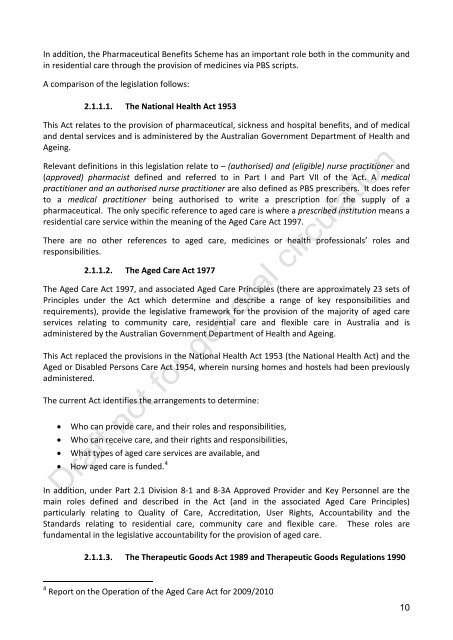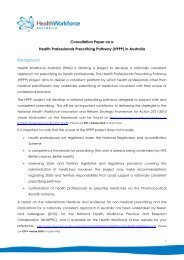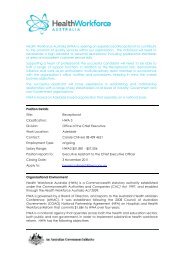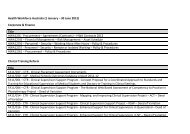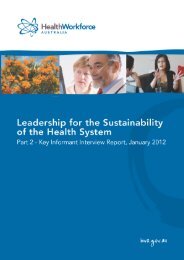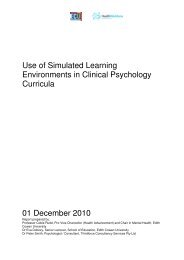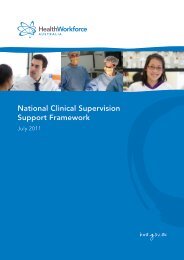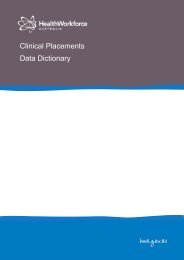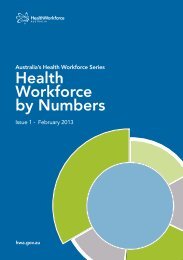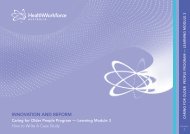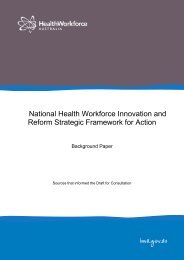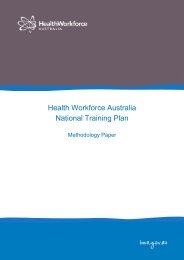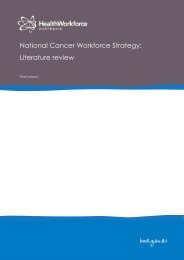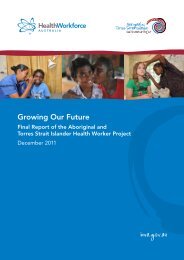SUMMARY - Safe Medications Management project: Key issues and ...
SUMMARY - Safe Medications Management project: Key issues and ...
SUMMARY - Safe Medications Management project: Key issues and ...
You also want an ePaper? Increase the reach of your titles
YUMPU automatically turns print PDFs into web optimized ePapers that Google loves.
In addition, the Pharmaceutical Benefits Scheme has an important role both in the community <strong>and</strong>in residential care through the provision of medicines via PBS scripts.A comparison of the legislation follows:2.1.1.1. The National Health Act 1953This Act relates to the provision of pharmaceutical, sickness <strong>and</strong> hospital benefits, <strong>and</strong> of medical<strong>and</strong> dental services <strong>and</strong> is administered by the Australian Government Department of Health <strong>and</strong>Ageing.Relevant definitions in this legislation relate to – (authorised) <strong>and</strong> (eligible) nurse practitioner <strong>and</strong>(approved) pharmacist defined <strong>and</strong> referred to in Part I <strong>and</strong> Part VII of the Act. A medicalpractitioner <strong>and</strong> an authorised nurse practitioner are also defined as PBS prescribers. It does referto a medical practitioner being authorised to write a prescription for the supply of apharmaceutical. The only specific reference to aged care is where a prescribed institution means aresidential care service within the meaning of the Aged Care Act 1997.There are no other references to aged care, medicines or health professionals’ roles <strong>and</strong>responsibilities.2.1.1.2. The Aged Care Act 1977The Aged Care Act 1997, <strong>and</strong> associated Aged Care Principles (there are approximately 23 sets ofPrinciples under the Act which determine <strong>and</strong> describe a range of key responsibilities <strong>and</strong>requirements), provide the legislative framework for the provision of the majority of aged careservices relating to community care, residential care <strong>and</strong> flexible care in Australia <strong>and</strong> isadministered by the Australian Government Department of Health <strong>and</strong> Ageing.This Act replaced the provisions in the National Health Act 1953 (the National Health Act) <strong>and</strong> theAged or Disabled Persons Care Act 1954, wherein nursing homes <strong>and</strong> hostels had been previouslyadministered.The current Act identifies the arrangements to determine:Who can provide care, <strong>and</strong> their roles <strong>and</strong> responsibilities,Who can receive care, <strong>and</strong> their rights <strong>and</strong> responsibilities, What types of aged care services are available, <strong>and</strong> How aged care is funded. 4In addition, under Part 2.1 Division 8-1 <strong>and</strong> 8-3A Approved Provider <strong>and</strong> <strong>Key</strong> Personnel are themain roles defined <strong>and</strong> described in the Act (<strong>and</strong> in the associated Aged Care Principles)particularly relating to Quality of Care, Accreditation, User Rights, Accountability <strong>and</strong> theSt<strong>and</strong>ards relating to residential care, community care <strong>and</strong> flexible care. These roles arefundamental in the legislative accountability for the provision of aged care.2.1.1.3. The Therapeutic Goods Act 1989 <strong>and</strong> Therapeutic Goods Regulations 19904 Report on the Operation of the Aged Care Act for 2009/201010


